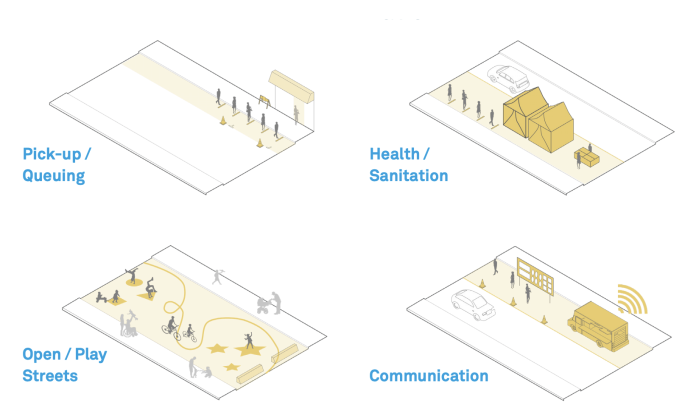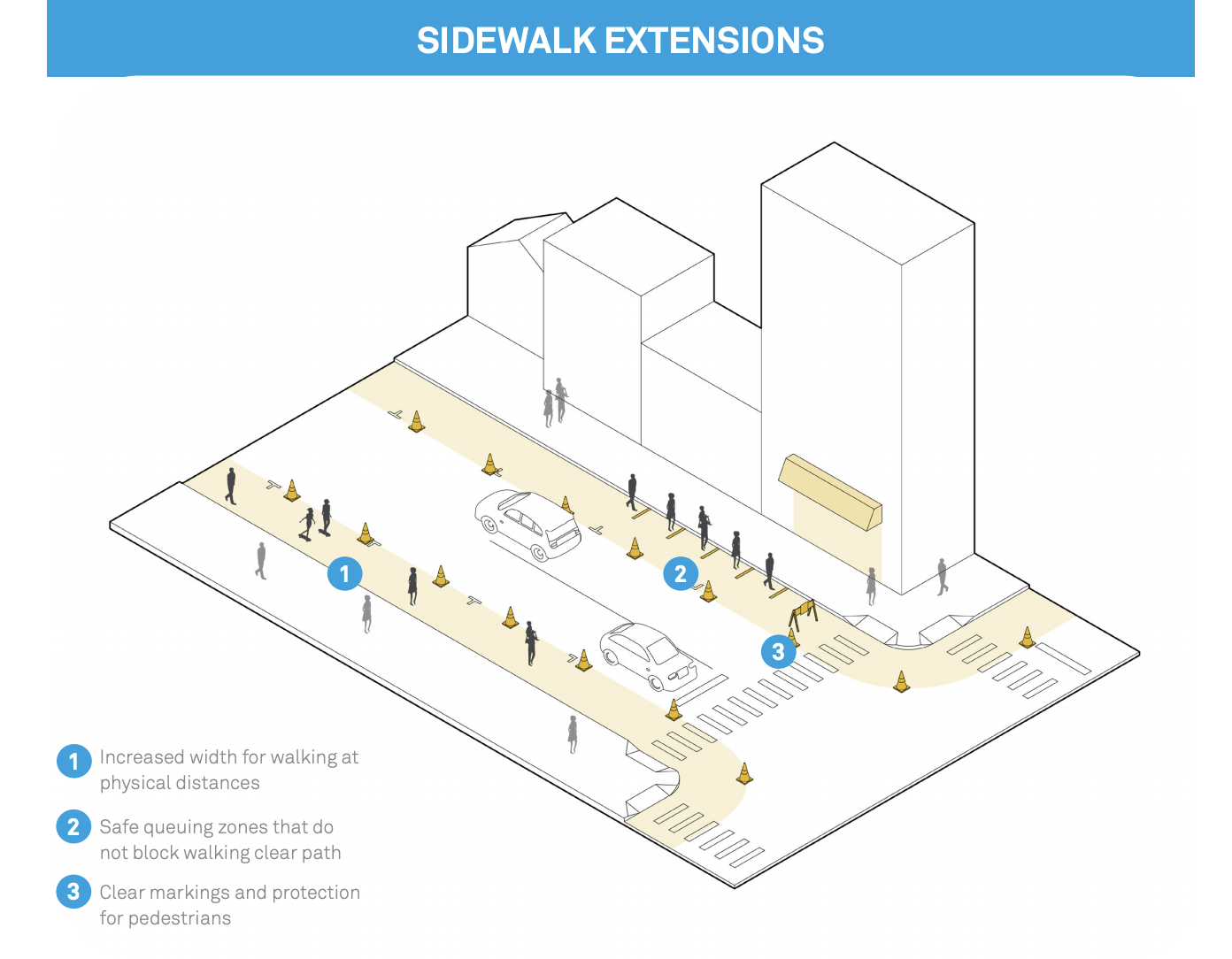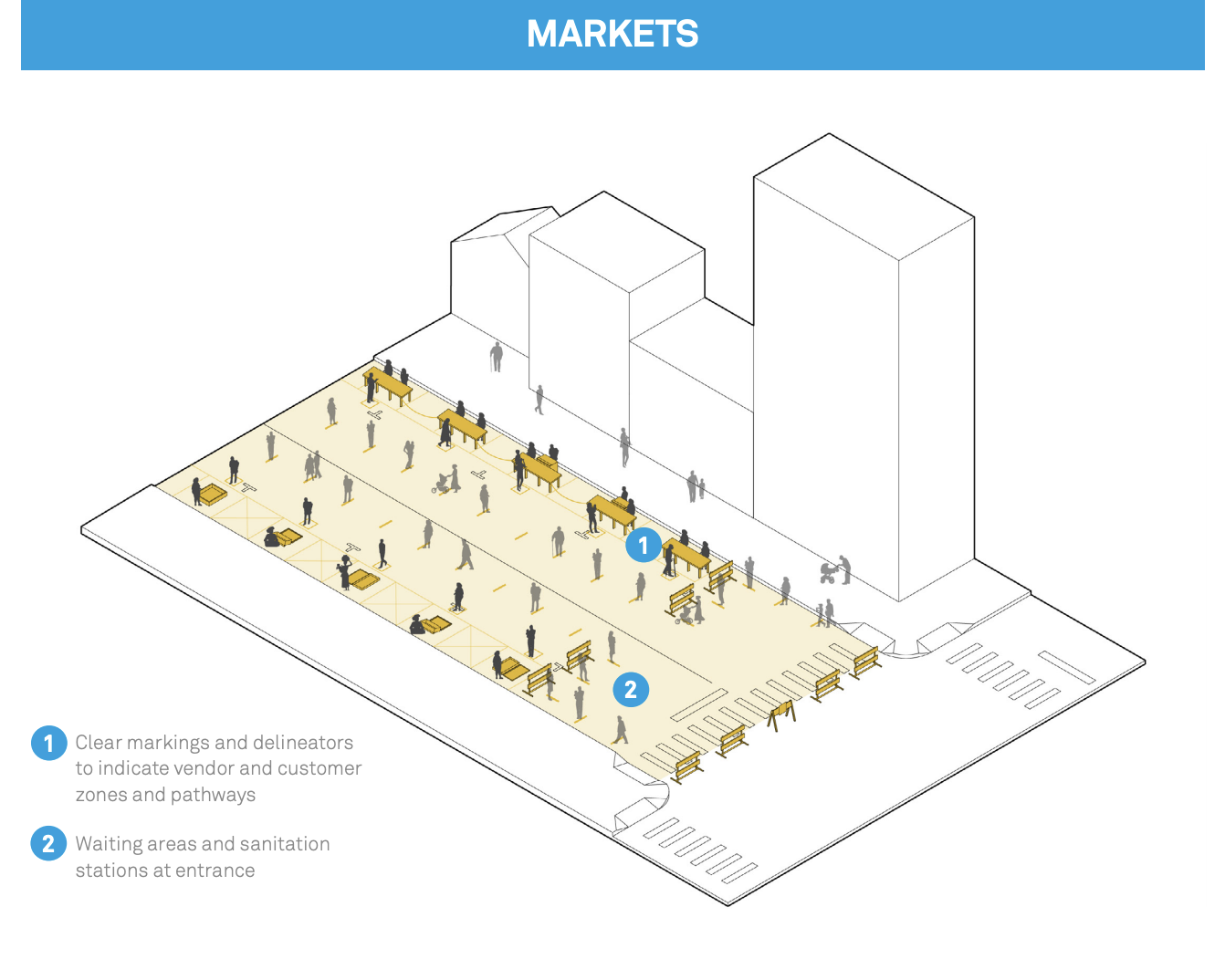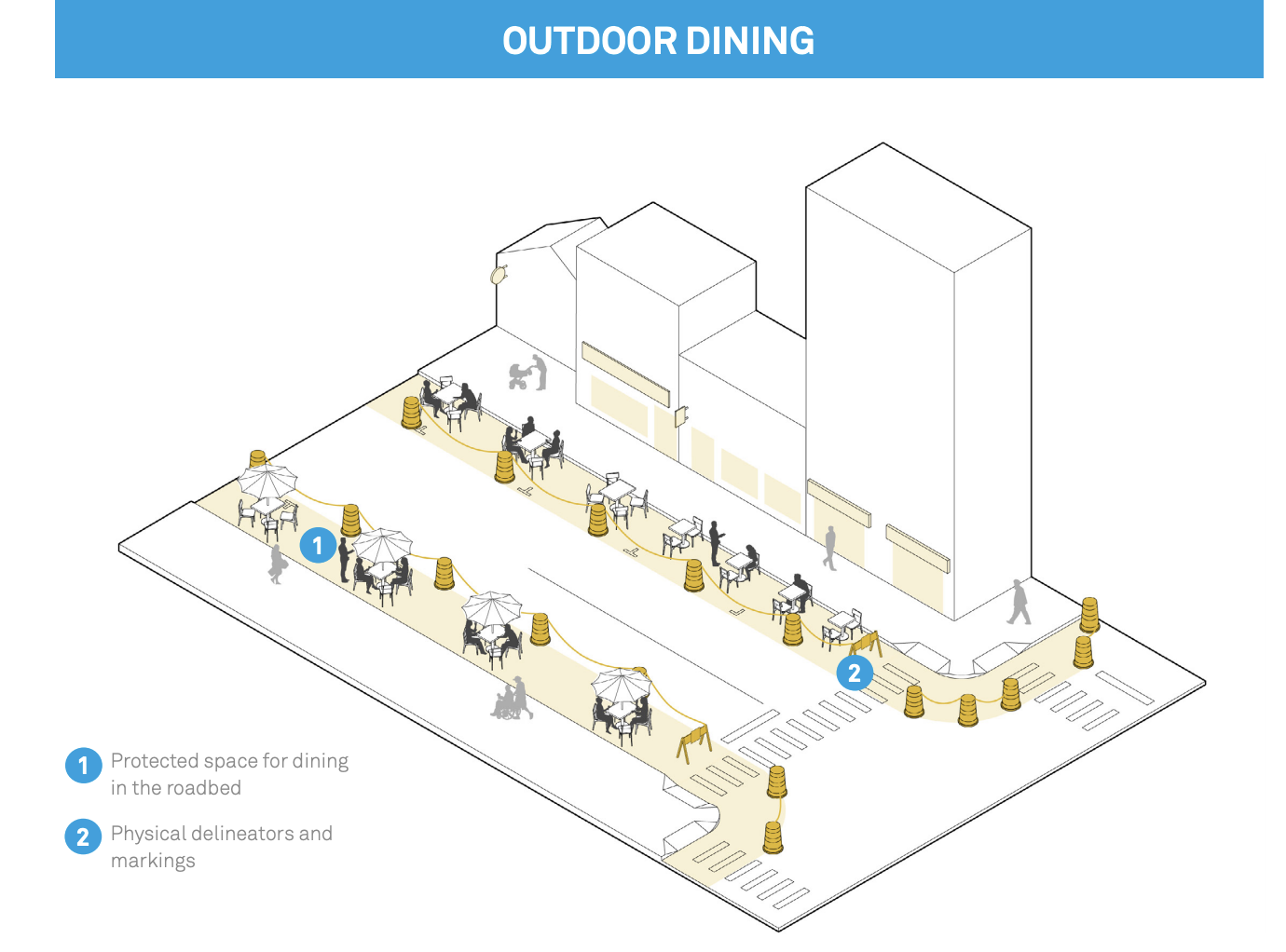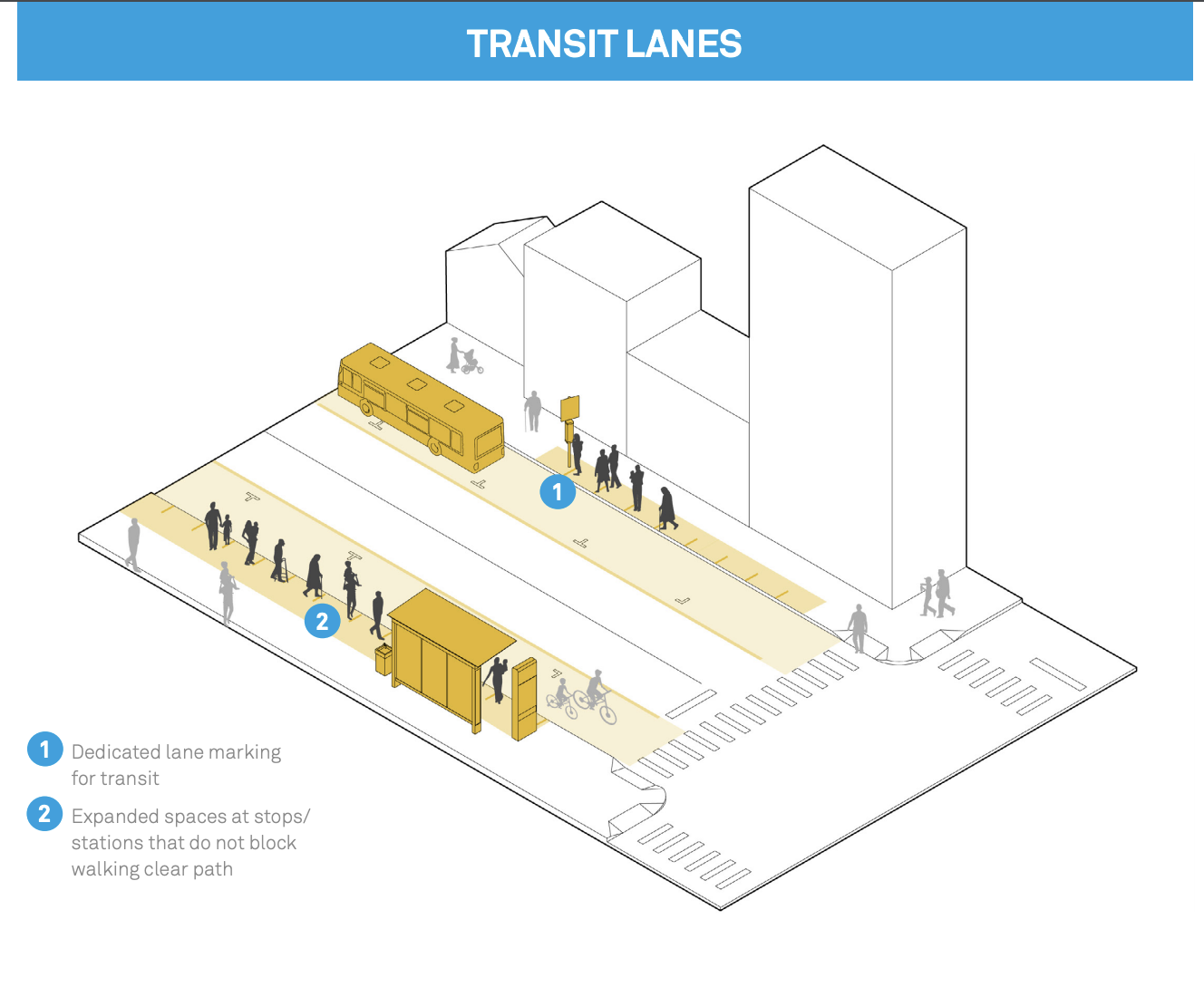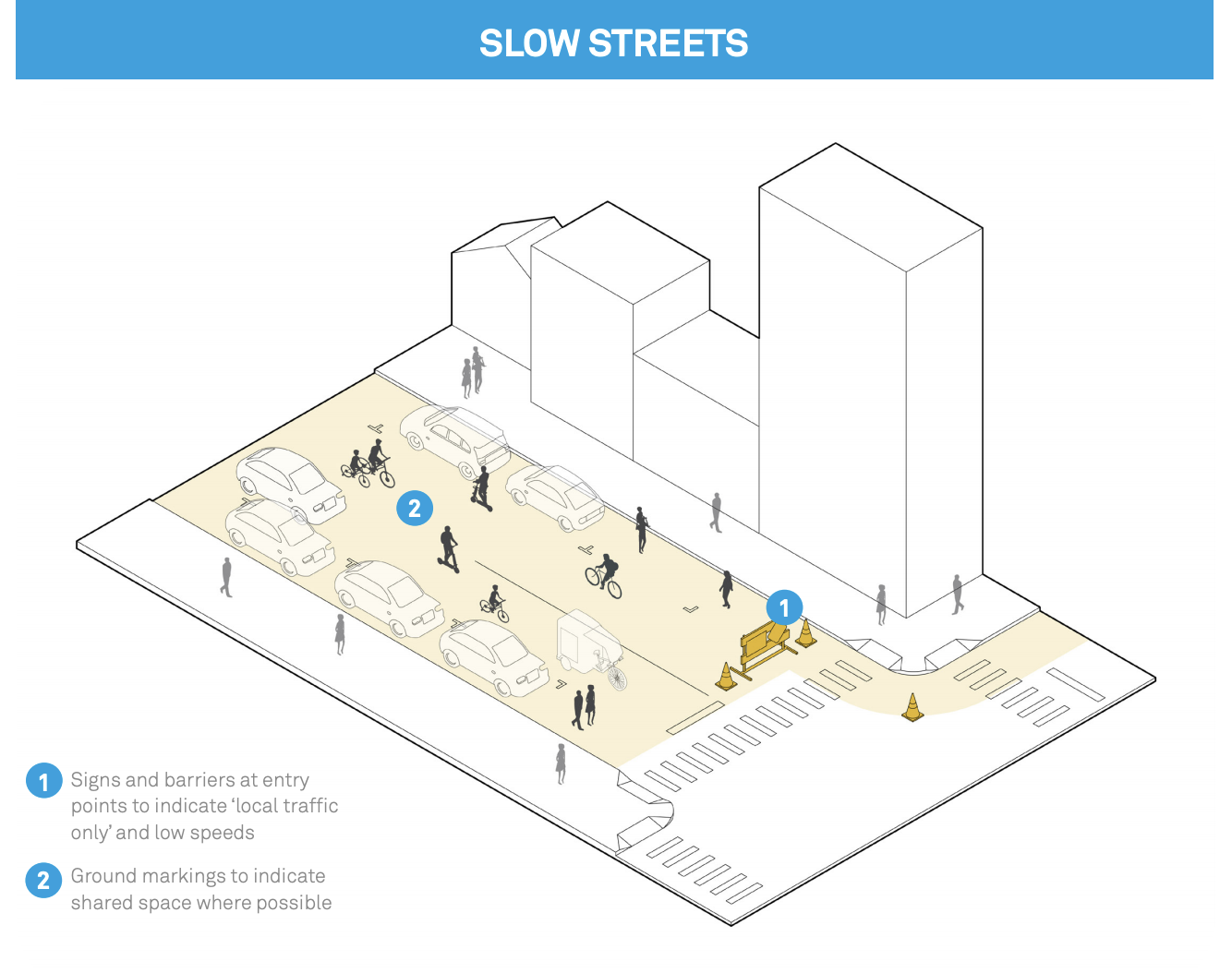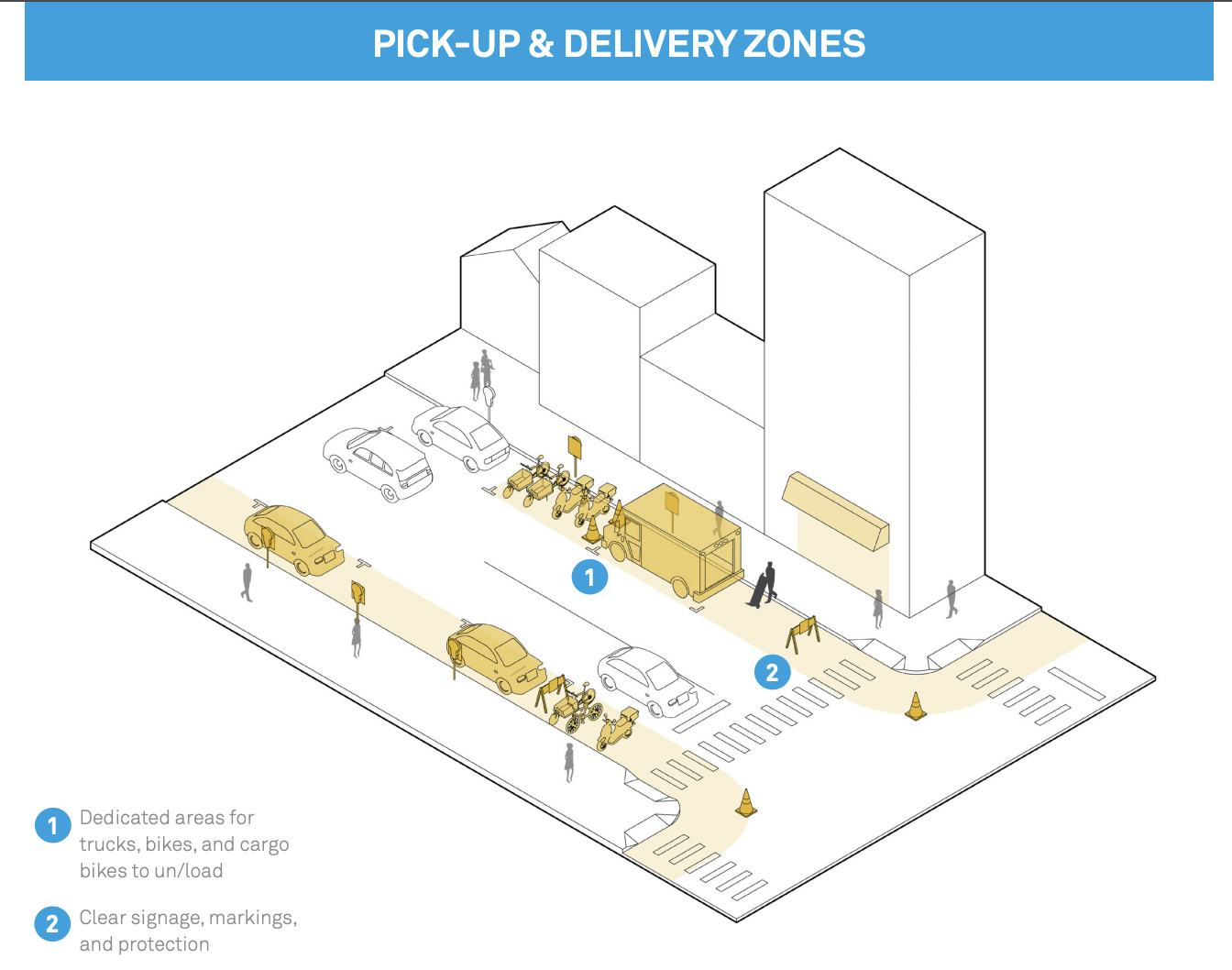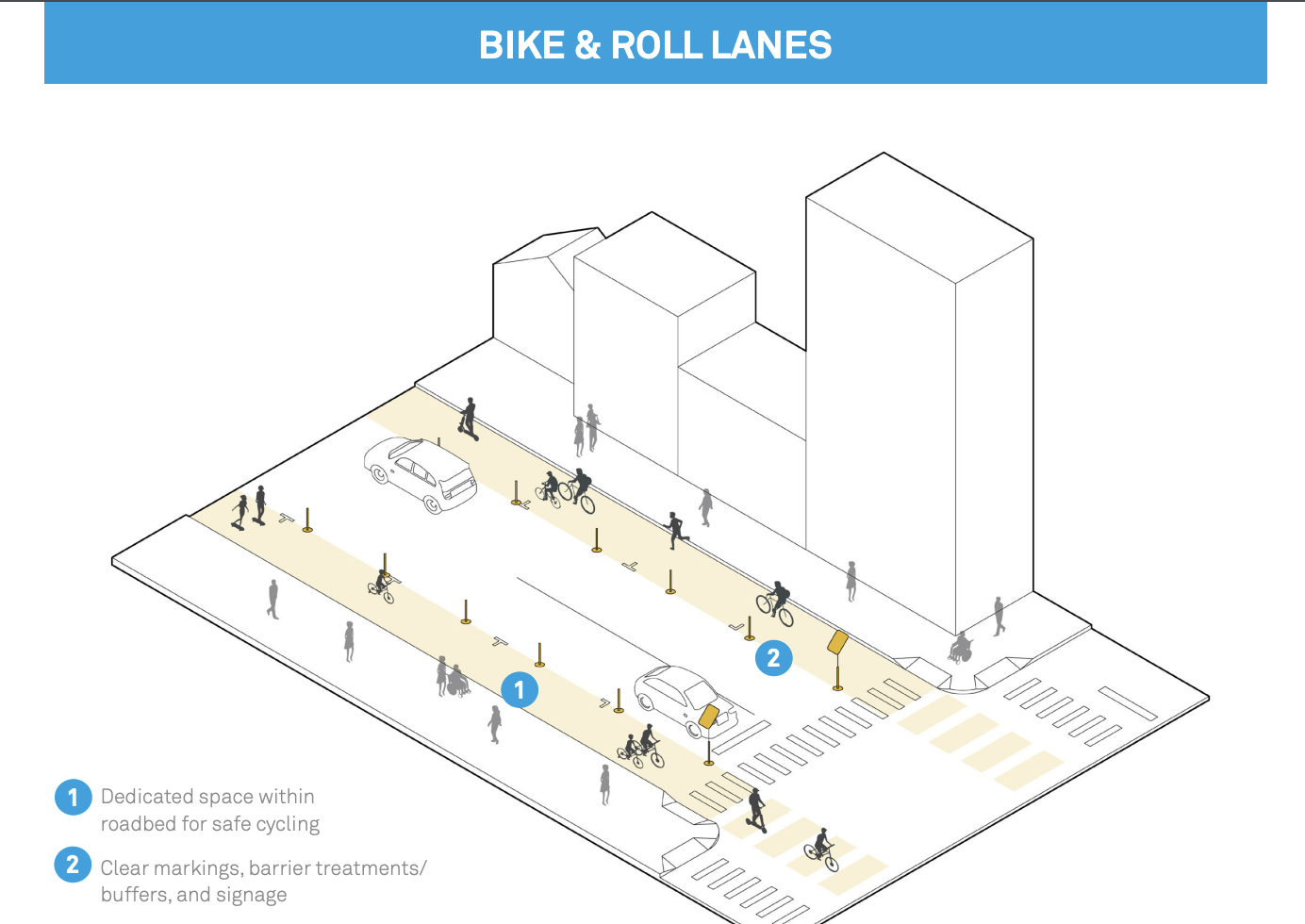The National Association of City Transportation Officials (NACTO) has published a new playbook for urban streets in response to the COVID-19 pandemic. Dubbed the “Streets for Pandemic Response and Recovery,” the playbook lays out seven emerging strategies in cities and many other policy choices for streets that can help maintain social distancing protocols and aid businesses. Some of the key strategies outlined in the document include things like slow streets, markets, outdoor dining, and sidewalk extensions.
“This is a historic moment when cities can change course. There may be limited mobility options as the crisis has slashed traffic volumes and transit service and people shelter at home,” the playbook states. “But these empty lanes provide new possibilities for people to use streets for essential trips and healthy activity right now, and they form the outline of the future cities we need to build. Creating safe, walkable streets and choices for getting around are critical during the initial crisis response, and also to achieving a long-term economic recovery that is equitable, sustainable, and enduring.”
Cities across the country and world have been creative and rapidly deployed a multitude of tactics to repurpose streets since COVID-19 went pandemic. Washington, D.C. has rolled out sidewalks extensions around grocery and retail businesses to give patrons more space to collect goods or safely queue outside. Oakland has committed to 74 miles of slow streets allowing people to safely walk, bike, and roll in the middle of streets for exercise and formal mobility across the city. Paris is rolling out hundreds of miles of emergency bike and roll lanes on streets to keep workers connected to jobs. And Tampa is turning over street space for outdoor dining instead of just sidewalks.
As the world has come to know, space is absolutely critical to reducing transmission of COVID-19, which is why NACTO has developed the playbook. Implementing the strategies in it though requires cities to thoughtfully reconsider some of their right-of-way space priorities to balance local public health, mobility, and economic objectives. NACTO’s guide identifies several uses of right-of-way that could be reconsidered, which includes the following:
- “Remove individual parking space(s) or a curbside parking lane.”
- “Narrow a motor vehicle lane or lanes.”
- “Shift parking or loading away from the curb, even where it requires closing a vehicle lane.”
- “Designate a street as local access only to reduce vehicle volumes and speed to levels where street space can be shared.”
- “Close motor vehicle lane(s), or the entire street, to enable adequate physical distancing or improve accessibility and safety for other road users.”

The playbook provides a policy matrix that highlights different strategies that can be used on specific street types and at certain points of the pandemic response. During the stay-at-home phase, local neighborhood streets might benefit from things like pop-up parks, slow streets, WiFi hotspots, and speed management while in the pre-vaccine reopening phase such streets may be better suited to just local-access only strategies and street closures for schools, religious, and cultural providers. Likewise, major urban streets during the stay-at-home phase may benefit from sidewalk extensions, curbside pick-up/drop-off zones, reduced signal cycles, and automatic pedestrian signal recall. Later, this type of street could move to much more substantial changes that add bike lanes, allow for outdoor dining and market space, and involve bus priority treatments.

NACTO provides detailed guidance on seven emerging strategies that cities are deploying. The guidance provides real-world examples of each strategy as well as the context for them, actions to take in rolling them out, and the timeline in planning and implementing them.
As an example, NACTO suggests that cities contemplating outdoor dining areas locate them in areas where restaurants, cafés, food stall, and street food vendors are already clustered for best use. Best practice would waive any permitting fees for outdoor dining zones and establish the number of tables and occupancy allowed. NACTO estimates that this type of strategy could take about a week of planning and deployment to implement and could benefit from months of continued use by businesses.
The strategy recommendations go deeper with specific best practices on planning, engagement, design, implementation, and monitoring. Again for outdoor dining, NACTO makes a variety of high-level and helpful recommendations that include some of the following:
- In the engagement process, NACTO urges involvement of local business groups or improvement districts to reach businesses that would benefit from the strategy;
- In the planning process, NACTO urges consideration of outdoor dining hours of operation and working with parking enforcement/transportation management staff to support street closure; and
- In the design process, NACTO urges use of strong separation between the dining area and the street closure point as well as social distancing tactics to keep patrons and tables sufficiently spread out.

The way of life of only a few months ago is gone, and now is the time to determine how best to adjust to the pandemic in a healthy, safe, equitable, and sustainable way. The NACTO playbook is a useful starting point for city officials considering how to best respond to the pandemic through streets, a major public resource just waiting to be tapped for the benefit of all.
Stephen is a professional urban planner in Puget Sound with a passion for sustainable, livable, and diverse cities. He is especially interested in how policies, regulations, and programs can promote positive outcomes for communities. With stints in great cities like Bellingham and Cork, Stephen currently lives in Seattle. He primarily covers land use and transportation issues and has been with The Urbanist since 2014.

